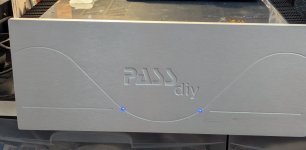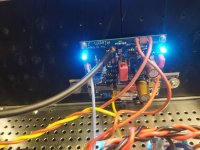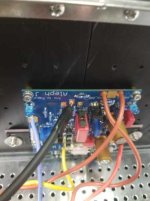note - I didn't say anything about functionality of amp ( smudgy Crystal Ball);
again, if in doubt, insert fuses
again, if in doubt, insert fuses
Hey there,
Just writing to keep y’all posted as I am sure you are waiting with bated breath. Anyways, dropped the dim bulb tester, crossed my fingers and fired her up. Didn’t notice any issues, so started taking measurements across R29 and the binding posts. Took most the day taking my time to make the adjustments and let the temps normalize. Got to what I thought were reasonable readings and, for the first time, tested it with some tunes. Sounded great on some crappy little speakers! Gonna let it bake for a while before moving it to the full system.
Thanks for all of the help from the community - much appreciated. Special thanks to @birdbox @rhthatcher @ItsAllInMyHead and @Zen Mod for the continued support and advice. Most certainly couldn’t have done it without y’all.
Sincerely, Jim.
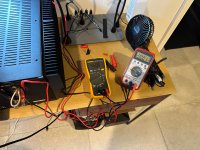
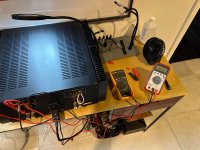
Just writing to keep y’all posted as I am sure you are waiting with bated breath. Anyways, dropped the dim bulb tester, crossed my fingers and fired her up. Didn’t notice any issues, so started taking measurements across R29 and the binding posts. Took most the day taking my time to make the adjustments and let the temps normalize. Got to what I thought were reasonable readings and, for the first time, tested it with some tunes. Sounded great on some crappy little speakers! Gonna let it bake for a while before moving it to the full system.
Thanks for all of the help from the community - much appreciated. Special thanks to @birdbox @rhthatcher @ItsAllInMyHead and @Zen Mod for the continued support and advice. Most certainly couldn’t have done it without y’all.
Sincerely, Jim.


some of us are building amps just to show pics and boast around ...........




If the T4 BC546B is "bad", can one replace it with a BC546C? If yes, should the other amp board also be swapped to a BC546C (pull the BC546B?)?
I have plenty of BC546C, but no BC546B on hand.
I ask as I'm helping a fellow member fix their janky first build, which has a really bad looking T4.
Here's the formerly janky boards semi-"fixed" with some serious clean up and resoldering.


I have plenty of BC546C, but no BC546B on hand.
I ask as I'm helping a fellow member fix their janky first build, which has a really bad looking T4.
Here's the formerly janky boards semi-"fixed" with some serious clean up and resoldering.
Last edited:
YesIf the T4 BC546B is "bad", can one replace it with a BC546C?
No need to change it in the other board.If yes, should the other amp board also be swapped to a BC546C (pull the BC546B?)?
@Dutch9600
Lots of well lit and in-focus pictures are needed to help you out as ZM noted.
My first thought is you should check that your rectifiers are not shorted to ground through the snubber PCB's that are often used for a PSU. It seems that blown fuses would mean you have a short to ground somewhere. Start with the rectifier snubber PCB boards if you used those.
There are plenty of other locations a short to ground could exist, so I'm just suggesting you start at the rectifiers due to the known flaw of the older version of rhthatcher rectifier PCB boards. Next step would be to look for "shorts to ground" that should not exist using a digital multi-meter (DMM) and the schematic as a guide. It's also possible you have your trimpots set backwards and are drawing too much current if they are set to maximum at start up.
The "Hive of minds" will help you solve the problem if you provide the correct information (proper measurements once requested and lots of well lit pictures of your build). We will get this figured out, just help us help you by providing more data (lots of well lit and in focus pictures as a starting point).
Also, pictures are just so fun to look at, so give us some picture porn of your Aleph Jzm amp build!
Lots of well lit and in-focus pictures are needed to help you out as ZM noted.
My first thought is you should check that your rectifiers are not shorted to ground through the snubber PCB's that are often used for a PSU. It seems that blown fuses would mean you have a short to ground somewhere. Start with the rectifier snubber PCB boards if you used those.
There are plenty of other locations a short to ground could exist, so I'm just suggesting you start at the rectifiers due to the known flaw of the older version of rhthatcher rectifier PCB boards. Next step would be to look for "shorts to ground" that should not exist using a digital multi-meter (DMM) and the schematic as a guide. It's also possible you have your trimpots set backwards and are drawing too much current if they are set to maximum at start up.
The "Hive of minds" will help you solve the problem if you provide the correct information (proper measurements once requested and lots of well lit pictures of your build). We will get this figured out, just help us help you by providing more data (lots of well lit and in focus pictures as a starting point).
Also, pictures are just so fun to look at, so give us some picture porn of your Aleph Jzm amp build!
Last edited:
Here is a few photos
Attachments
-
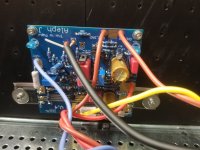 Resized_20250424_072259.jpeg133.8 KB · Views: 54
Resized_20250424_072259.jpeg133.8 KB · Views: 54 -
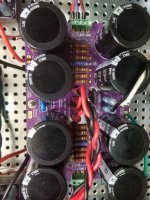 Resized_20250424_072350.jpeg152.6 KB · Views: 53
Resized_20250424_072350.jpeg152.6 KB · Views: 53 -
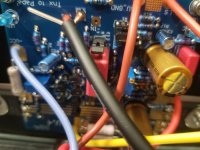 Resized_20250424_072334.jpeg115.5 KB · Views: 52
Resized_20250424_072334.jpeg115.5 KB · Views: 52 -
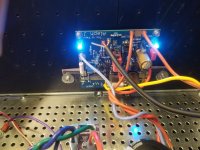 Resized_20250424_072436.jpeg138.9 KB · Views: 50
Resized_20250424_072436.jpeg138.9 KB · Views: 50 -
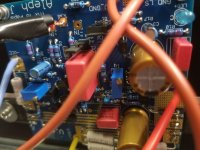 Resized_20250424_072319.jpeg121.1 KB · Views: 49
Resized_20250424_072319.jpeg121.1 KB · Views: 49 -
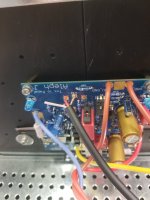 Resized_20250424_072146.jpeg103.8 KB · Views: 51
Resized_20250424_072146.jpeg103.8 KB · Views: 51 -
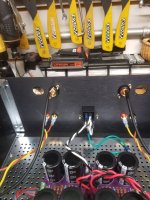 Resized_20250424_072246.jpeg162.7 KB · Views: 45
Resized_20250424_072246.jpeg162.7 KB · Views: 45 -
 Resized_20250406_115812(1).jpeg127.8 KB · Views: 55
Resized_20250406_115812(1).jpeg127.8 KB · Views: 55 -
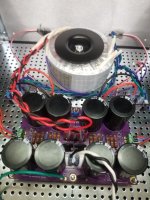 Resized_20250424_072015.jpeg146.3 KB · Views: 55
Resized_20250424_072015.jpeg146.3 KB · Views: 55 -
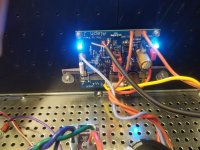 Resized_20250424_072436.jpeg138.9 KB · Views: 51
Resized_20250424_072436.jpeg138.9 KB · Views: 51
You made it to the very end without blowing fuses, and the only change is removing the variac.
A slow ramp up in voltage to full mains does not blow fuses.
What value / type / rating fuses are you using?
Did you do a final check of the PSU without a variable transformer before connecting the amp boards? If not, disconnect both amp boards and test the PSU on its own and let us know. If you'd like, disconnect the PSU board and your transformer secondaries from the rectifiers and check that none of the legs of the rectifiers are shorted to the chassis base plate. That may save you another fuse.
A slow ramp up in voltage to full mains does not blow fuses.
What value / type / rating fuses are you using?
Did you do a final check of the PSU without a variable transformer before connecting the amp boards? If not, disconnect both amp boards and test the PSU on its own and let us know. If you'd like, disconnect the PSU board and your transformer secondaries from the rectifiers and check that none of the legs of the rectifiers are shorted to the chassis base plate. That may save you another fuse.
Disconnected the PSU board and transformer secondaries from the rectifiers and check that none of the legs of the rectifiers are shorted to the chassis base plate. Did so by continuity test with DMM or should I do some other way?
Try a 2A5 or 3A fuse. Slow blow is a must. You did not mention that characteristic.
If the PSU tested fine on it's own without the Variac, there was no need to test for the shorted rectifiers, but it's always nice.
Now you know the issue is likely somewhere with the amp boards or the fuse.
I'd try a 2A5 slow blow fuse and see if that solves your issue. Connect one channel at a time to the PSU. Then if both don't blow the fuse, connect both.
If you have a DBT, it can't hurt to use it.
If the PSU tested fine on it's own without the Variac, there was no need to test for the shorted rectifiers, but it's always nice.
Now you know the issue is likely somewhere with the amp boards or the fuse.
I'd try a 2A5 slow blow fuse and see if that solves your issue. Connect one channel at a time to the PSU. Then if both don't blow the fuse, connect both.
If you have a DBT, it can't hurt to use it.
- Home
- Amplifiers
- Pass Labs
- Aleph Jzm Kit Build Support
